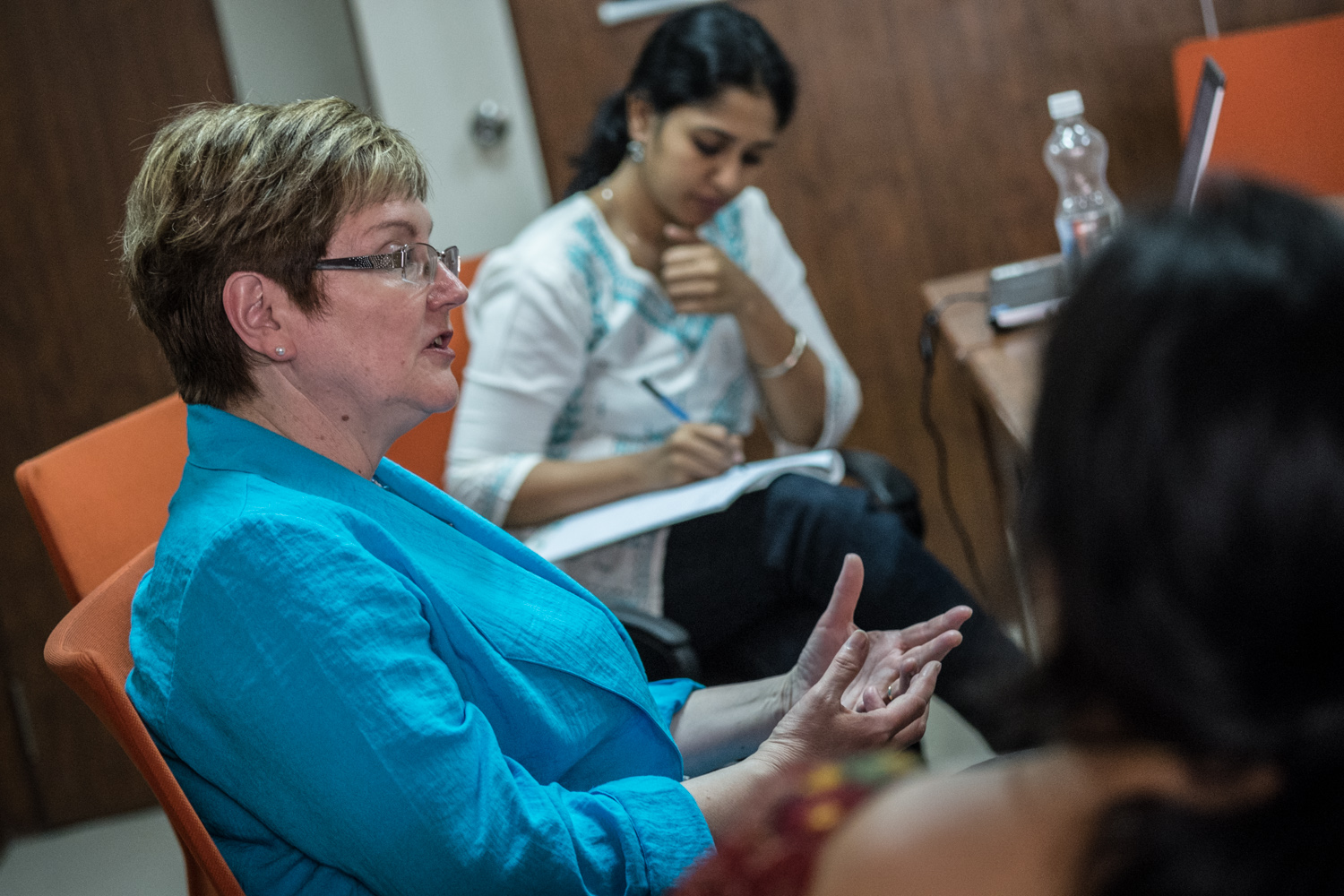
“We want to make sure new faculty have the tools to be effective in the classroom,” said Ann Austin, left, education professor at Michigan State University and co-principal investigator for the Center for the Integration of Research, Teaching and Learning. Photo courtesy of MSU Communications and Brand Strategy.
Michigan State University will help improve the preparation of thousands of future professors as part of a national network focused on improving teaching in science, technology, engineering and mathematics, or STEM.
The Center for the Integration of Research, Teaching and Learning has received a $5 million grant from the National Science Foundation to expand its work from six to 22 universities. MSU has been an integral part of the center since it started a decade ago, as one of the founding universities investigating and developing ways to prepare prospective STEM faculty members as both researchers and teachers.
Ultimately, the goal is to enhance math and science courses taken by college students across the country.
“The question has been how to bring about organizational change to improve instruction for students interested in becoming scientists, as well as for future citizens who need to be well informed about the scientific issues of our time,” said Ann Austin, professor in MSU’s College of Education and co-principal investigator and overall coordinator of research and evaluation for the center. “Doctoral students who participate in CIRTL are learning evidence-based teaching strategies that support student learning, and also how to study their own teaching.”
Adding to previous funding, the new grant includes nearly $600,000 for MSU, which will support research about the network as well as professional development opportunities for STEM doctoral candidates on campus. The Graduate School offers a growing number of programs to help doctoral students and post-docs gain teaching skills based on principles known to enhance student learning. This includes various workshops, orientation for new teaching assistants, a certificate in college teaching program and a one-year competitive fellowship organized in conjunction with the center.
A key concept of center is that improving one’s teaching boils down to the question “What have my students learned?” This question, the researchers argue, can be addressed in each classroom by the experimental method familiar to scientists: hypothesis generation, experiment, observation, analysis and improvement, and an approach called “teaching-as-research” within the CIRTL community.
“We are expanding on our career and professional development model here at MSU for preparing the next generation of professors,” said Henry “Rique” Campa, associate dean of the Graduate School and co-principal investigator of the center, with responsibilities for coordinating the project at MSU. “And now, the expansion of CIRTL will give our students more opportunities to tap into similar resources across the country.”
Along with programs developed at each institution, students attending CIRTL universities have access to cross-network courses and discussions available online and opportunities to visit other campuses. Graduate students and post-docs will be able to share knowledge related to different student populations, university cultures and locations. Leaders expect to add more universities to the network in the future.
“Historically, faculty have been very oriented around preparing doctoral students as researchers but typically there has not been as much attention to preparing them as excellent teachers,” Austin said. “We want to make sure new faculty, from now on, have the tools to be effective in the classroom.”




